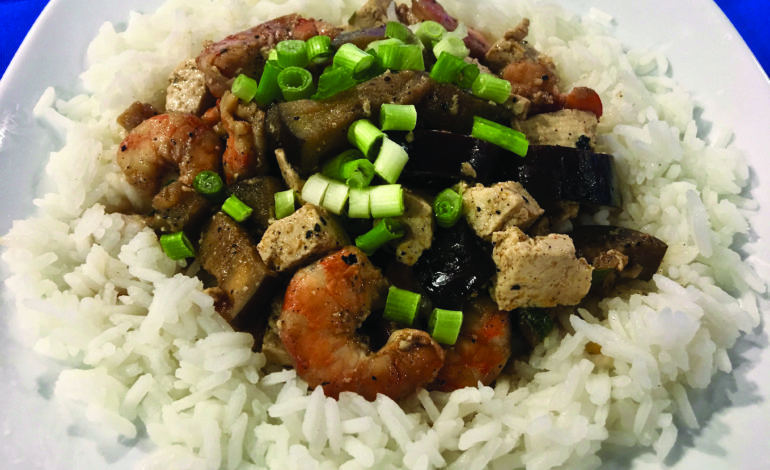The average American dines out between four and five times a week.
While restaurants can offer a valuable social experience, regularly choosing convenience foods over meals at home can negatively influence health based on portions, methods of preparation and commercial additives.
Fortunately, there are easy ways to serve up a flavorful, healthy menu from home.
Appetizers
Between a restaurant’s mini entrees and sharable sample platters, it’s easy to over-consume before the main course even arrives. With healthier options at home, everyone can enjoy pre-meal, guilt-free snacking.
Fried favorites: If frying or sautéing, start by choosing a heart-healthy oil (olive, avocado, sesame, canola). If breading, use a lighter batter or alternative breading like whole wheat bread crumbs, riced cauliflower or chopped nuts.
Baking homemade appetizers can still provide the crunch and flavor of a traditionally fried bar snack. Try some garlic cauliflower bites or bell pepper nachos.
Dips: Swapping sour cream and other heavy bases for Greek yogurt, cottage cheese or light cream cheese can improve nutritional value without compromising flavor. This subtle switch works for anything from spinach artichoke dip to buffalo chicken dip. Prepping at home also allows for healthier dipping options such as veggies or wholegrain crackers.
Main course
While not all restaurant foods are fried or breaded, healthier courses may lack their full nutritional value based on preparation methods and additives that would not be found in most home-cooked meals.
Proteins: Traditionally, the preparation behind restaurant meats involves excess oils, extra fat and sodium. At home, there is the option to bake, grill and utilize the natural flavor of herbs/spices to explore different flavor palettes, from Italian pesto chicken to Asian lettuce chicken wraps.
Carbohydrates: Instead of facing the temptation of potatoes, pasta and other heavy restaurant starches, find alternatives that offer the same flavor with better nutrition. Believe it or not, cauliflower can make a tasty twist on mashed potatoes, fried rice and pizza crust.
Vegetables: Steaming and grilling vegetables at home allows full flavor and all the health benefits of the vegetables without overcooking. Better yet, exploring veggie carb swaps increases nutrition, while reducing over consumption and can lead to delicious dishes like zucchini ravioli or eggplant pizza bites. Dessert Dining at home doesn’t mean skipping dessert. The difference is that restaurant desserts can carry as many as 100 grams of fat, with more than double the portions per serving.
Baking swaps: Swapping traditional baking oils for apple sauce or yogurt can create anything from blueberry lemon Greek yogurt muffins to Greek yogurt fruit bark, which both offer the natural sweetness of fruit without added sugars and fats.
Bonus hidden nutrition: Disguising nutritious ingredients like black beans, zucchini or carrots and spinach in a homemade dessert is easier than it seems. Not only can it mimic the taste of restaurant-style sweets, it can add vitamins, minerals, antioxidants and moisture to your favorite dessert.
Two-In-One: Instead of drinking coffee with dessert at a restaurant, serve up naturally sweet, protein-filled energy bites at home. Not only do they make a great alternative to apple pie and chocolate peanut butter candy, but they can also double as a delicious breakfast or midday snack in the days following.
Grace Derocha is a registered dietitian, certified diabetes educator and certified health coach at Blue Cross Blue Shield of Michigan. For more health tips, visit AHealthierMichigan.org.






Leave a Reply